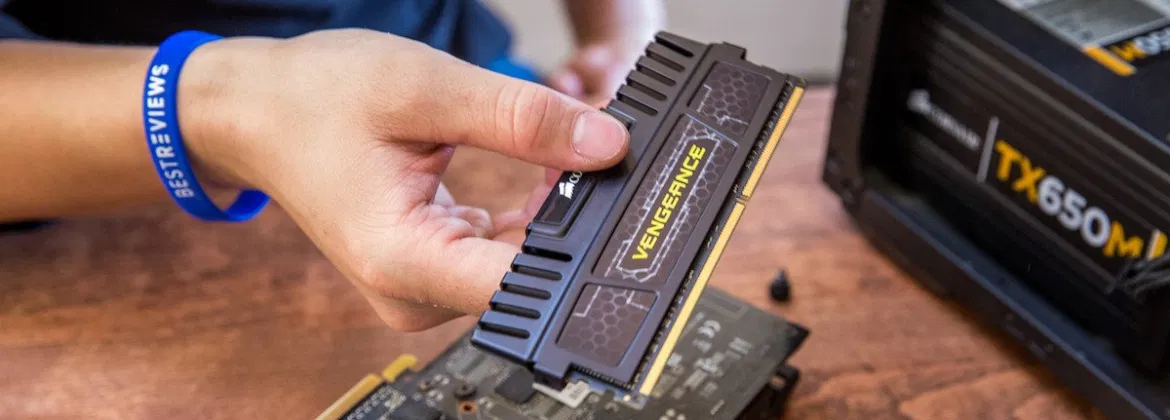Ready to buy now? Shop the best:
- Best of the Best: Corsair Vengeance RGB PRO DDR4 RAM
- Best Bang for the Buck: G.Skill Ripjaws V Series (Intel XMP) DDR4 RAM
- Simple Yet Solid: Corsair Vengeance LPX DDR4 RAM 16GB
- Great Option for Gaming: G.Skill Trident Z5 Neo RGB Series DDR5 RAM
- Bargain Pick: Corsair Vengeance LPX DDR4 RAM
Whether you’re building a gaming PC or you’re just looking for an upgrade, your computer’s RAM plays a major factor in its speed.
RAM is the short-term memory of your computer that enables it to quickly respond to requests, and it comes in “sticks” that plug into ports in your computer. There’s no such thing as too much memory, but the latest options can be quite expensive. Ideally, your RAM should be more than capable of handling your everyday tasks so it serves you as well today as it will in four years. Memory-intensive tasks include 3D modeling, editing videos, or playing AAA video games, while word processing and browsing the internet are less taxing on your computer’s memory.
In addition to choosing the right capacity, you also need to consider what types of RAM your computer is compatible with as well as factors like transfer speed and RGB lighting.

How to buy the best RAM
What is RAM?
RAM stands for “random access memory” and serves as the short-term memory of your computer. While your internal drive contains data like applications, documents, and your operating system, your RAM quickly accesses the data on your drive to respond to requests and stores data you may need in the short term.
Memory plays the biggest role in your computer’s speed, followed by your CPU, which does the “thinking” of your computer and is responsible for launching applications quickly. More RAM is generally better, but it can become expensive at higher capacities and may be more than you need.
Choosing the right RAM capacity
If you’ve never purchased RAM before, your options can be intimidating. However, by finding out what type of memory is compatible with your computer and how much memory you need for your day-to-day tasks, you’ll have a good idea of what to look for.
RAM traditionally comes in capacities of 2GB, 4GB, 8GB, 16GB, and 32GB. The larger the capacity, the more data your computer can handle at once.
For everyday tasks like web browsing, 4 to 8GB will get you by. However, at this capacity your computer may become sluggish when you have several browser tabs or applications open at once.
For gaming, digital illustration, and video editing, 16GB offers plenty of speed and multitasking capability. However, as programs become more demanding, you may need to upgrade after a few years.
For 3D modeling, rendering, and other professional tasks, consider 32GB to keep your computer running smoothly for years to come.
If you play a lot of video games or use video editing software, take note of whether your graphics processing unit is a discrete GPU (a separate unit) or integrated GPU. Discrete GPUs usually have their own dedicated memory, and as a result you don’t need as much RAM.
Form factor and compatibility
RAM sticks are not interchangeable. The motherboard of your computer has a specific type of slot for memory. Most computers have what are known as DIMM slots, which can vary in width and number of pins.
Most computers use double data rate RAM, which typically comes in the form of DDR4 RAM. Motherboards that accept DDR3 RAM are not compatible with DDR4 due to the pin arrangement. This letter-and-number combination indicates the generation of RAM.
Before you purchase a RAM stick for your computer, make note of what modules your computer is compatible with. If you have a laptop, RAM may be soldered in and therefore impossible to upgrade. In addition, operating systems have maximum memory limits.
Note that most Apple computers and laptops either have RAM soldered into the motherboard or are extremely challenging to replace.
In many cases, RAM plays a bigger role in speed and performance than CPU.
